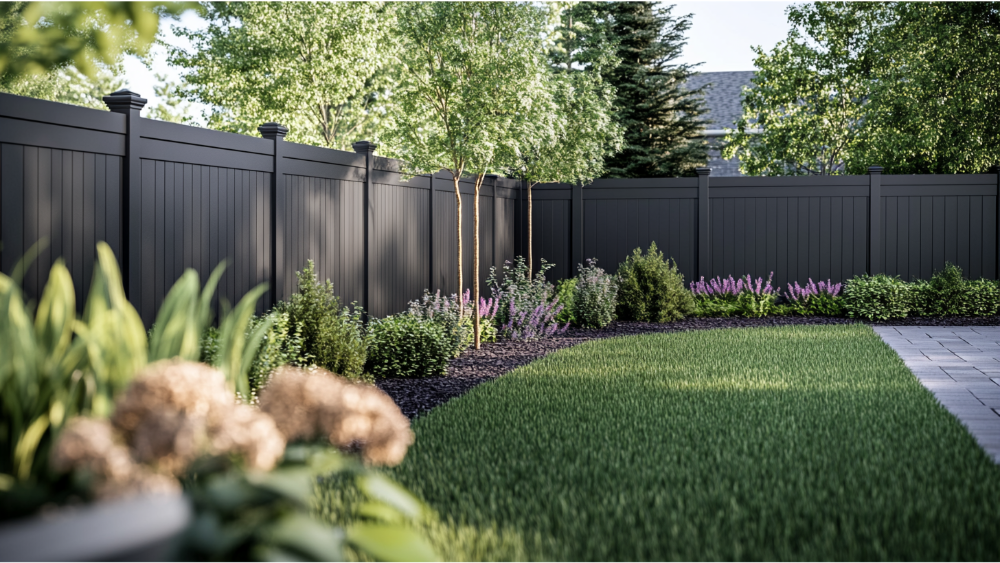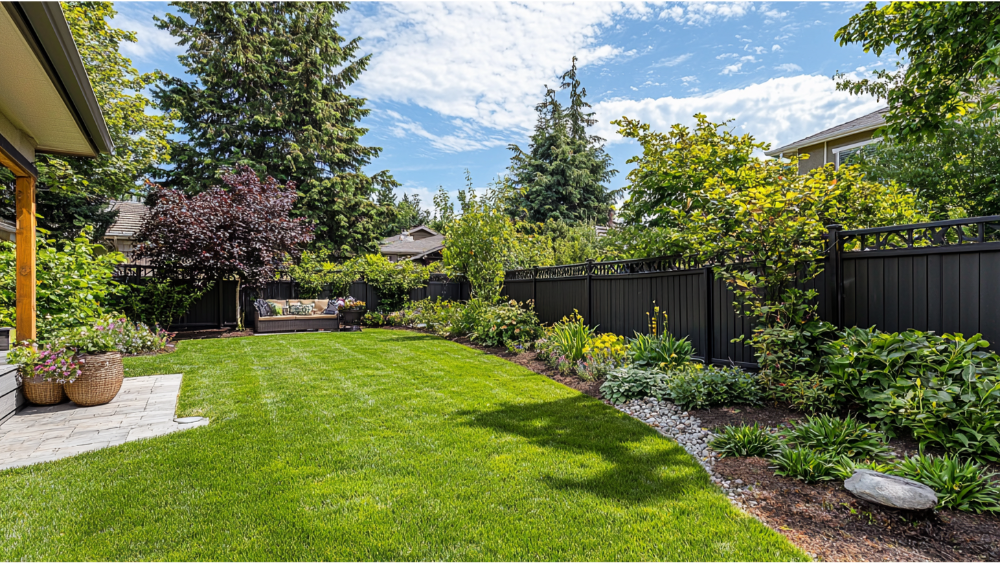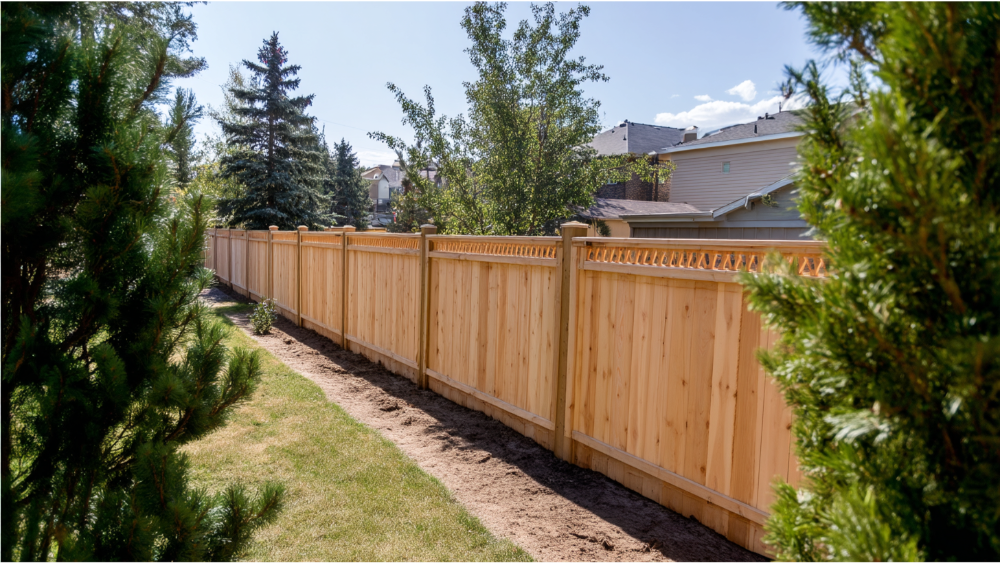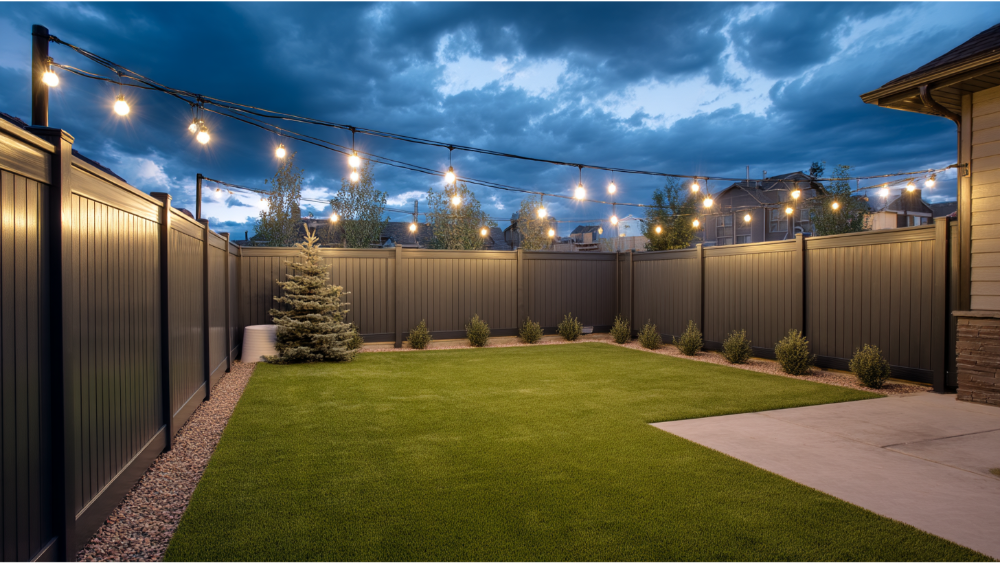Vinyl fencing is a top choice for many homeowners because of its durability, clean appearance, and low maintenance benefits. Unlike wood fencing, vinyl doesn’t require regular staining or sealing. Property owners wonder: does painting your vinyl fence give it a fresh look?
The short answer? Yes, you can paint, but it’s not always the best idea. Vinyl is a non-porous material, which means most paint won’t naturally adhere without proper preparation. If you’re considering updating the appearance with a fresh coat, here’s everything you need to know before you break out the brush or paint sprayer.
Why Many Homeowners Consider Painting a Vinyl Fence
There are plenty of reasons homeowners want to paint their fence. Over time, exposure to sun, wind, rain, and humidity can cause discoloration, chalking or UV damage.
Here are a few common motivations:
- Your fence has lost its luster and needs a fresh coat to restore curbside appeal
- You want a different color to match new siding, roofing, or landscaping
- HOAs or design guidelines require uniform style options or specific shades
- You’re trying to cover up blemishes like dirt, mildew, or light staining
- You’re inspired to integrate decorative features like hanging planters
Vinyl fences are available in a limited range of colors. However, while painting can be done, that doesn’t mean it always should.
Can You Paint a Vinyl Fence? Yes—But It Comes with Caveats
If you’re asking, “Can you paint a vinyl fence without damaging it?”, the answer is yes. There’s a list of tradeoffs and technical challenges that come along with the decision.
Vinyl is a non-porous material, unlike wood, which means paint doesn’t naturally grip the surface. Without properly preparing, paint can eventually peel, flake, or bubble off.
Here’s what to consider:
- The maintenance is low and this is the main selling point of vinyl. Once painted, you’ll need regular upkeep.
- Most warranties are voided once you paint the fence.
- Dark colors absorb heat, which can cause panels to warp or bend.
- A poor paint job with the wrong materials or technique will fail fast—sometimes within a season.

How to Paint Evenly Your Vinyl Fence (The Right Way)
Here’s how to paint your vinyl fence for an even finish that lasts.
Step 1: Remove Dirt and Debris Using Soapy Water or a Power Washer
Before anything else, thoroughly clean the fence. Use soapy water and a soft sponge to wipe away dust, mildew, and grime, or opt for a pressure washer on a low setting to safely blast away stuck-on debris.
Clean surfaces ensure paint will adhere properly and give you a smoother result. Let the fence dry completely.
Step 2: Scuff Sand or Degloss the Vinyl Surface
Since these surfaces are slick and smooth, you’ll need to scuff sand the panels to create slight texture. This allows the primer and paint to adhere better. You can also use a liquid deglosser designed for PVC or plastic to break down the gloss without sanding.
Be thorough but gentle—aggressive sanding can damage the vinyl layer and lead to premature fading.
Step 3: Use a Primer to Prep the Surface
Next, apply an epoxy based primer designed for plastic or vinyl. This acts as a bonding agent between the vinyl and your topcoat, making sure the paint works as intended.
Without this step, your paint is likely to fail. The primer forms a base layer, gripping the fence and ensures long-term adhesion.
Step 4: Apply High-Quality Acrylic Paint Using a Paint Sprayer or Roller
Now it’s time to paint. Choose a high-quality acrylic paint formulated for exteriors and safe for vinyl. Use paint that is not oil based, as they don’t bond well and will peel over time.
Use a paint sprayer for the best, most uniform coverage, especially on fences with slats or grooves. If a sprayer isn’t available, a foam roller works well. Avoid thick strokes, which are more prone to bubbling and flaking.
Step 5: Apply Multiple Layers for a Lasting Finish
Let the first layer dry completely before applying a second coat. Two thin, even coats will last longer and look better than one heavy coat. Be sure to work in mild, dry weather for best results. It’s best not to paint on rainy or humid days, as moisture can affect how the paint adheres, even creating mold.

The Pros and Cons of Painting Vinyl Fencing
Pros of Painting a Vinyl Fence
- Allows you to explore different color and styles
- Less expensive upfront than replacing your fence
- Helps blend in older fencing with recent landscaping or hardscape updates
- A quick and affordable way to boost curb appeal without a full replacement
Cons of Painting a Vinyl Fence
- Paint may eventually peel, requiring ongoing maintenance
- Paint won’t adhere well without proper prep—mistakes show fast
- Painting voids most manufacturer warranties
- You’ll need to repaint every few years
Why You Might Want a New Fence and Avoid Painting
Painting is risky on PVC fencing if the panels are already brittle, faded, or breaking down from years of UV exposure. In some cases, stick to a smarter solution— investing in a new fence.
A new vinyl fence offers:
- Improved durability
- Modern style options
- Long-term savings on maintenance
- A manufacturer-backed warranty
- Better resistance to weather elements
Smart Alternatives to Painting a Vinyl Fence
Painting isn’t your only option. Here are a few alternatives:
- Power wash to remove discoloration and debris
- Apply a vinyl-safe UV protectant or plastic restorer
- Replace damaged panels for a like-new look
- Add decorative accents like hanging planters or trellises for visual interest
How Long Will New Color Last on a Painted Vinyl Fence?
With the right products and careful prep, a painted vinyl fence can last three to five years. However, paint will eventually peel, especially on areas exposed to direct sunlight or frequent rain.
Frequently Asked “Can You Paint a Vinyl Fence?” Questions
What is the right paint for vinyl?
Use exterior-grade 100% acrylic latex paint with an epoxy based primer. Avoid oil based paints, which don’t bond well to vinyl surfaces.
What tools should I use for the best finish?
A paint sprayer provides the smoothest even finish, especially for large areas. Foam rollers or high-quality brushes can work too.
Is painting cheaper than replacing a fence?
Yes—at least upfront. Consider repainting and labor costs which add up in the long-run.
Can I paint my vinyl fence a dark color?
It’s possible, but not recommended. Darker shades absorb more heat, which can cause the vinyl to warp or bubble.
Is vinyl fencing the same as PVC fencing?
Yes. Vinyl fencing is made from PVC (polyvinyl chloride). While durable, PVC’s slick surface makes painting more complex than materials like wood.
Need Help with Painting Your Vinyl Fence? Let’s Talk
At Inline Security Fence, we help homeowners across the Greater Seattle area and surrounding areas upgrade, repair, and replace their fences with solutions fitting their budget and style.
Contact us today to schedule a free consultation. We’ll help you find the best solution, designed to last for decades.




